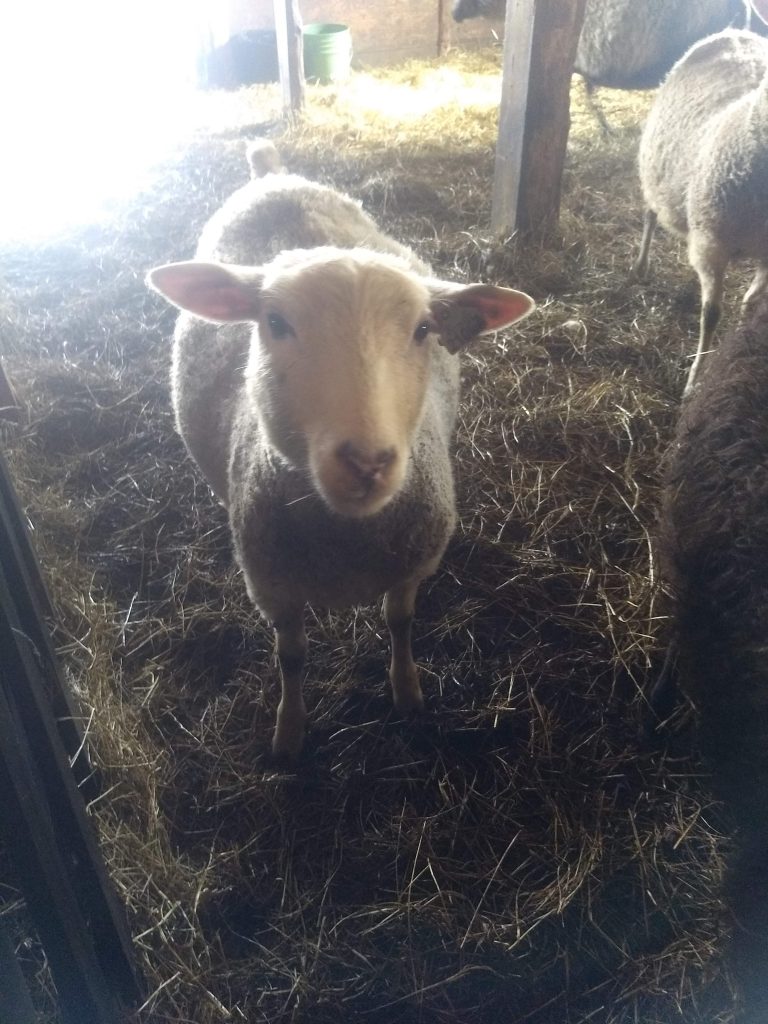Our first ewes are due on the 24th of February, so we have begun preparing for the expected flood of babies. Five are marked down for the 24th through the 27th, and a few I didn’t get dates for look like they might also join in for that time frame, thus the expected ‘flood’. Haha!
Eighteen of our ewes were exposed to the Texel ram for the month of October; both the ram and the ewes were in very good health, so we were able to remove him after 36 days with good confidence that everyone was pregnant. The round bellies in the barn are evidence of everyone’s vibrant fertility. Another factor of fertility is litter size – typically we have a couple singles, mostly twins and triplets, and a quad or two. Last year we even had a litter of sextuplets! We won’t know for sure until they are born, but I do enjoy guessing how many each ewe will have! So far, it looks like we’ll have plenty of twins, triplets, and more!
We bred only 7 ewes to a Finn ram, and most of them aren’t due until April. I prefer to only lamb for a month, as it is an intense time, but this year our second registered Finn ram was infertile due to a parasite infestation that got away from us. We try to treat at the earliest symptoms, but we missed them, and thus he was compromised too much to breed the ewes this year. Next year is his turn to shine!
As we get into the last 6 weeks of pregnancy, we begin to increase the ewe’s feed, and introduce grain. The lambs do about 70% of their growing during the last 4 weeks of gestation(source). This means we need to keep up their intake of nutrients so the lambs can be born strong and vigorous and the ewe stays healthy, without needing to use her stored nutrients to grow the lambs. If she has to draw from her own reserves during pregnancy, that can cause a serious issue called pregnancy toxemia. On the other hand, a shepherd doesn’t want to feed the girls too much rich feed, as that can cause the lambs to grow too big to fit through the birth canal. This isn’t much of an issue for Finnsheep, as they naturally have many very small lambs.
Texel sheep though, can have this problem. They are muscular, thrifty sheep, so feeding grain during the last weeks of gestation can cause the lambs to grow too large. We have crossed the two breeds, and are expecting 5 of those cross ewes to lamb in March, at a year old. We have noticed that they keep better condition than the pure Finn ewe lambs, though the two cross ewe lambs that are 1/4 Shetland are even thriftier. One in particular, Princess, has been in very good condition when some of the others were more thin. Her belly is large, and she looks uncomfortable already, so we are limiting her grain to reduce the chances of her lamb/s being too big(this involves my daughter putting her on a halter and holding her back while I feed the flock).
I purchased ear tags to mark each lamb, so we know who belongs to who. We will stock up on molasses for an energy drink that I give the ewes right after they lamb, we have milk from the cows, in case a lamb needs supplementation, there is cow colostrum in the freezer in case a ewe doesn’t have any, we have lamb coats in case it is cold, gloves and lube in case some lambs get tangled on the way out, and antibiotics and other emergency supplies in case of those types of complications.
Soon we will be spending many hours with the sheep, monitoring labor, setting up lambing pens for new moms to bond with their babies while they figure out nursing and walking, taking care of emergencies, and taking pleasure in the innocent joy of new life. In the meantime, we try to make sure we have emergency supplies on hand, and extra sleep stored up(is that even possible?).
This is my favorite time of year, filled with joys and heartbreaks. Each year we hope and pray for a smooth lambing season, and each year brings its own challenges. So far everyone looks great, so we are hoping for lots of healthy lambs, uncomplicated births, smooth recoveries, and plenty of milk. But there will be something that goes wrong, and anyway, without challenges, we don’t learn anything, right?


